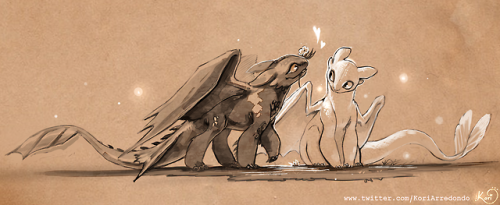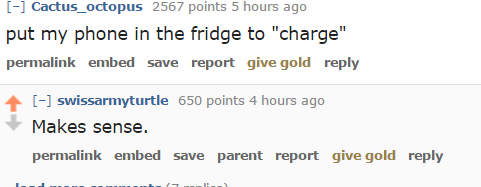“For You”

“For You”
More Posts from Kris10freeman and Others
When the whole party is down but your bard is up



Gamer cats
BEWARE— I mean BE AWARE!! ♠️💜
it is ASEXUALITY AWARENESS WEEK so you are all LEGALLY OBLIGATED to be FULLY AWARE of me at ALL TIMES.
Emotional Abuse can turn every day interactions into problems.
I have had a recent experience while in training for my new job and I thought I might express some thoughts about it.
The woman who has been training me is sweet and I like her, but her methods of critique and helping me get things correct is a bit…harsh from my perspective. And she’s not trying to be at all. She is really trying to help.
However, emotional abuse taints the perception and actions of a victim even years after abuse. And the worst part is that each victim’s experience is varied. The stereotypes of abuse we see in our media is just that: a stereotype. Abuse comes in many forms and each individual will have different triggers. However, abusers do have some commonalities, usually by being controlling or will get violent over little, silly or normal things.
I figured it would help to re-frame the way she approached it and maybe some people out there will consider this in the future. We obviously can’t know someone’s history and often you can’t pick out an abuse victim from a crowd. But to help avoid triggering emotional distress and protective behaviors, I think people aught to at least be aware and maybe avoid the following approaches when teaching or instructing someone else. ____________________________________________________
Over correcting a former victim can come off as a bit over-bearing, especially when their abuser was extremely controlling. Mine (who happened to be my mother) was not a very nurturing type. So when she would try to teach me how to do something, if I did it wrong during the first try she would often just take over. And it wasn’t like, “Oh sweetie let me do it.” No, I was more shoved out of the way by an agitated/angry parent who complained that I was unable to complete the task.
Behaviors over correcting caused: -Hesitating to help someone with a task unless they give permission. -Emotional distress and agitation when being corrected on every task, shot etc.
Things to change: -Correct when things need to be early on in training, gently. Let the person training do the task so they learn it properly. -If possible, let a few oopsie’s slide and inform the person of their mistake and NEXT time try to correct it (as long as this is applicable.) Don’t correct too much in front of customers or clients unless it’s important to do so.
While my co-worker was well meaning, she would often ask me to stop and look at the picture I had just taken (I am a photographer) and to think about what was wrong with it.
“Now stop here, and look at that picture. Think about it. What’s wrong with it?” Is a pretty close phrasing to what she used. To someone who had a healthy upbringing or no exposure to abuse would never consider how that might affect someone who has.
Growing up in an emotionally abusive household where being wrong was met with agitation, yelling or screaming, this means that phrase creates a deer in the headlights reaction from me. I won’t think because the only thing I know in that moment is that I did something wrong. While I know now I won’t face violent tantrums in response, that reaction is still ingrained in my head. So instead of getting a productive response, it reinforces the negative one.
Behaviors caused by not allowing the victim to be wrong sometimes: -Victim will freeze up when confronted about doing something wrong and shut down. -May bring back a defensive persona and/or victim will shut down or experience severe emotional distress.
Things to change: -When a person in training gets something wrong, inform them in a gentle manner. “Ope, looks like you have a stray collar there. Let’s do that one more time.” Or “We can’t see her arm in the shot. Bring that back around.” Avoid asking them to point out the mistake if you can as this puts the spotlight on their them and reinforces the negative reaction and can cause an emotional shut down.
Much excite 🤩

Excited for botw 2

this is what they mean when they say ‘boys will be boys’










(source)
Hello! I'm a self taught artist who wants to get better at shading/lighting and backgrounds especially. But whenever I try to do a background study, I can't break it down and it ends up looking terrible. Do you know of anything that would help?

Hi! I would like to talk a little bit of the thought process behind photo study and the importance of simplicity.

It is really important to break down an image to chunks of value rather than seeing the detail first, which can lead to over-complicated mush of colors with no constructed value.
These are some of the artists that inspired me to get used to breaking down images in the most simplest way possible:

Notice how super simple and straight-on-point his thumbs are? And this is how his colorscript for Moana looks like:


Zero detail. Yet you have all the information you need!
I personally think these thumb studies are super important to train your eyes to break down an image in values and colors and therefore be able to organize and design your painting better.

I just found out that today was International Asexuality Day so I had to quickly scribble this down!! Hope all my fellow aces out there are having a lovely day! ~<3

follow
-
 darradreamer reblogged this · 1 week ago
darradreamer reblogged this · 1 week ago -
 darradreamer liked this · 1 week ago
darradreamer liked this · 1 week ago -
 late-gamer liked this · 1 month ago
late-gamer liked this · 1 month ago -
 mikaonee liked this · 4 months ago
mikaonee liked this · 4 months ago -
 chailoaf liked this · 4 months ago
chailoaf liked this · 4 months ago -
 randomgrenlim liked this · 4 months ago
randomgrenlim liked this · 4 months ago -
 sneakyturtle183 liked this · 4 months ago
sneakyturtle183 liked this · 4 months ago -
 waen-wad liked this · 4 months ago
waen-wad liked this · 4 months ago -
 living-shifting-oil liked this · 4 months ago
living-shifting-oil liked this · 4 months ago -
 veluni reblogged this · 4 months ago
veluni reblogged this · 4 months ago -
 the-little-red-strawberry liked this · 4 months ago
the-little-red-strawberry liked this · 4 months ago -
 fnaffan88 reblogged this · 6 months ago
fnaffan88 reblogged this · 6 months ago -
 fnaffan88 liked this · 6 months ago
fnaffan88 liked this · 6 months ago -
 sellenic liked this · 6 months ago
sellenic liked this · 6 months ago -
 kitrulornes liked this · 6 months ago
kitrulornes liked this · 6 months ago -
 lunaiiraptor liked this · 11 months ago
lunaiiraptor liked this · 11 months ago -
 its-raining-rats-and-frogs liked this · 1 year ago
its-raining-rats-and-frogs liked this · 1 year ago -
 mushyfrogcakes reblogged this · 1 year ago
mushyfrogcakes reblogged this · 1 year ago -
 mushyfrogcakes liked this · 1 year ago
mushyfrogcakes liked this · 1 year ago -
 nintendocrowbro reblogged this · 1 year ago
nintendocrowbro reblogged this · 1 year ago -
 ships-n-bats reblogged this · 1 year ago
ships-n-bats reblogged this · 1 year ago -
 lovely-loveyy liked this · 1 year ago
lovely-loveyy liked this · 1 year ago -
 ninetales reblogged this · 1 year ago
ninetales reblogged this · 1 year ago -
 kittenpinkamations reblogged this · 1 year ago
kittenpinkamations reblogged this · 1 year ago -
 wonhosgrl liked this · 1 year ago
wonhosgrl liked this · 1 year ago -
 vanillabudino reblogged this · 1 year ago
vanillabudino reblogged this · 1 year ago -
 kittenpinkamations liked this · 1 year ago
kittenpinkamations liked this · 1 year ago -
 jyushiny liked this · 2 years ago
jyushiny liked this · 2 years ago -
 loveshinyrocks reblogged this · 2 years ago
loveshinyrocks reblogged this · 2 years ago -
 speakeasyperstephone reblogged this · 2 years ago
speakeasyperstephone reblogged this · 2 years ago -
 izumidragonheart liked this · 2 years ago
izumidragonheart liked this · 2 years ago -
 buitcatt liked this · 2 years ago
buitcatt liked this · 2 years ago -
 loveshinyrocks reblogged this · 2 years ago
loveshinyrocks reblogged this · 2 years ago -
 loveshinyrocks reblogged this · 2 years ago
loveshinyrocks reblogged this · 2 years ago -
 ax0ka1 liked this · 2 years ago
ax0ka1 liked this · 2 years ago -
 sofitimofeeva-blog liked this · 2 years ago
sofitimofeeva-blog liked this · 2 years ago -
 loveshinyrocks reblogged this · 2 years ago
loveshinyrocks reblogged this · 2 years ago -
 nopenopeinope liked this · 3 years ago
nopenopeinope liked this · 3 years ago -
 whe1m liked this · 3 years ago
whe1m liked this · 3 years ago -
 shiny-aesthetic liked this · 3 years ago
shiny-aesthetic liked this · 3 years ago -
 thebeastunleashed liked this · 3 years ago
thebeastunleashed liked this · 3 years ago -
 hccp reblogged this · 3 years ago
hccp reblogged this · 3 years ago -
 ketrun liked this · 3 years ago
ketrun liked this · 3 years ago -
 danieldanielson6 reblogged this · 3 years ago
danieldanielson6 reblogged this · 3 years ago
